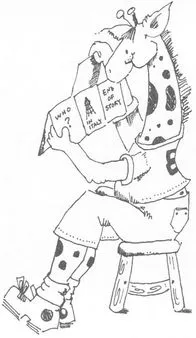
Learning About Winter with Children's Literature
Margaret A. Bryant, Marjorie Keiper, Anne Petit
- 160 Seiten
- English
- ePUB (handyfreundlich)
- Über iOS und Android verfügbar
Learning About Winter with Children's Literature
Margaret A. Bryant, Marjorie Keiper, Anne Petit
Über dieses Buch
Taking a thematic approach to learning that employs seeing, hearing, reading, and writing, these books outline three four-week, cross-curricular units that develop the competencies children need to become fluent, independent readers and writers. While each unit focuses primarily on language—phonic skills, structural analysis, punctuation, capitalization, poetry, and comprehension—they also include math, science, social studies, music, art, and even mini-lessons in French for cross-cultural appreciation. Understanding that student ability levels in younger grades can vary widely, lesson plans are keyed to three types of learners: emerging, typical, and advanced. The series includes three titles that cover fall, spring, and winter, and the books can be used independently or together throughout the school year.
Häufig gestellte Fragen
Information
1
DECEMBER

Week 1: Overview
Moongame by Frank Asch
Bears: A First Discovery Book by Gallimard Jeunesse and Laura Bour (to be
read aloud)
Sierra Club Wildlife Library: Bears by Ian Stirling (to be read aloud)
Polar Express by Chris Van Allsburg (to be read aloud)
“December” by Maurice Sendak
“Grandpa Bear’s Lullaby” by Jane Yolan
The Nutcracker by Tchaikovsky
- Structural analysis Review the concept of root words.
Review skills previously introduced and have them assessed. - Comprehension Vocabulary
- Social Studies Compare and contrast holiday customs of different cultures. Develop an appreciation for the influence of these cultures on present customs.
12-by-18-inch drawing paper
3-by-11-inch strips of construction paper
Brown construction paper
Poetry and Skills Session
| Step 1: | Read the poem together. Children will now be familiar with the form, and most will be able to read it with success. |
| Step 2: | Identify rhyming words. Ask the students to offer some other rhymes for the poem. Examples: “Hanukkah tree with candle lights . . . ” “Football tree with helmets and pads . . . ” Encourage and accept all responses. This activity can be continued as a writing project. |
| Step 3: | Distribute copies of the poem for your students to illustrate and include in their poetry notebooks. |
| Step 1: | Read the poem several times with the group. Discuss the meaning. |
| Step 2: | Ask children to identify the root words. Mark them with an erasable pen if the poem is laminated. |
| Step 3: | List the endings that have been added to the root words. Distribute copies of the poem for your students to illustrate and include in their poetry notebooks. |
| Step 1: | Read several times for rhythm and pleasure. Ask children to alternate reading the verses. |
| Step 2: | Review the root words. Children who have trouble with root words should be grouped for individualized instruction. |
| Step 3: | Make a list of words that have been changed through the use of endings. |
| Step 1: | Read this several times so the children can enjoy the humor in it. |
| Step 2: | Ask the children to suggest other questions you might ask a grizzly bear. |
| Step 3: | This poem provides an excellent opportunity for creative writing. Even a “silly” response may trigger an idea in another child. Write some variations of the poem on chart paper or the chalk board. |
| Step 4: | Distribute copies of the poem for your students to illustrate and include in their poetry notebooks. |
Reading Instruction
| Step 1: | Introduce the Happy Birthday Moon big book. Discuss the fact that Mr. Asch both wrote and illustrated the book. |
| Step 2: | Note the dedication. Many of his books are dedicated to “Devin.” As the books are read, the children may notice this and begin to ask questions about it. This interest can be a springboard for writing letters to the author. |
| Step 3: | Read the book together. Allow time for the children to enjoy the humor in the story and make comments about the activities of Bear. |
| Step 4: | Discuss Mr. Asch’s stylized illustrations. The simplicity of the pictures reflects the childlike qualities of Bear. He believes that it is possible to talk to the moon if you just get high enough. He has no doubt that he can build a rocket that will take him to the moon to see how it tastes. Bear’s innocence is reflected in the simple forms, clear lines, and limited use of colors in the illustrations. The drawings lack detail and are simple almost to the point of being cliches. |
| Step 1: | Mix abilities for guided reading of student copies. |
| Step 2: | Ask questions that can be answered by finding sentences on the page. Let various children read the sentences aloud. Offer assistance as needed. |
| Step 3: | Make note of difficult vocabulary. Select fifteen to twenty words for focus. Write these on cards cut in the shape of a moon and a top hat. |